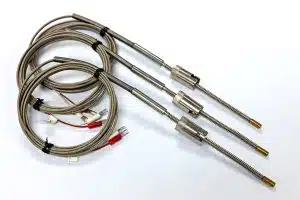We all understand that higher circuit density and increasingly compact microelectronic devices have created a need for more efficient cooling. Vapor chambers have emerged as a widely employed solution in some of the most demanding microelectronics applications. They are already found in high-performance computers, such as servers, workstations, and personal gaming desktops and … [Read more...]
Adding Function, Value, and Performance to Direct-to-Chip (DTC) Cold Plates With Ultrasonic Additive Manufacturing
Lance Dumigan Fabrisonic, LLC Mark Norfolk Fabrisonic, LLC Practical Knowledge Gained “The performance of DTC cold plates can be enhanced by a new method of fabrication called Ultrasonic Additive Manufacturing (UAM). Building DTC cold plates with UAM could enhance performance and functionality.” The direction of Artificial intelligence and High Power Computing … [Read more...]
The Applicability of JESD51-14 for the Determination of Junction to Case Thermal Resistance
Rjc (or sometimes ThetaJC, θjc, Rth_jc), the so-called ‘junction to case’ thermal resistance, is a thermal metric that enables comparison of the thermal performance of packaged semiconductor devices from differing suppliers. The JEDEC standard JESD51-14 [1] documents a method for the experimental determination of Rjc. Although applicable for packages that exhibit a … [Read more...]
Tech Brief: Effect of Thermocouple Size
Thermocouples are widely used for temperature measurements. They are particularly useful in lab testing, due to their relatively low cost and the ability to easily fabricate thermocouples of specific lengths for a given test. This Tech Brief discusses issues related to the size of a thermocouple that may be considered when using them. A thermocouple consists of two wires made … [Read more...]
Report About the THERMINIC 2023 Workshop
By: Marta Rencz, Andras Poppe, and Genevieve Martin The 29th issue of the THERMINIC (Thermal investigations of ICs and Systems) workshops was held on 27-29 September 2023 in Budapest, Hungary at the Budapest Marriott Hotel. Over 110 participants enjoyed the high quality presentations from 17 countries. About half of the participants came from the industry, half from the … [Read more...]











